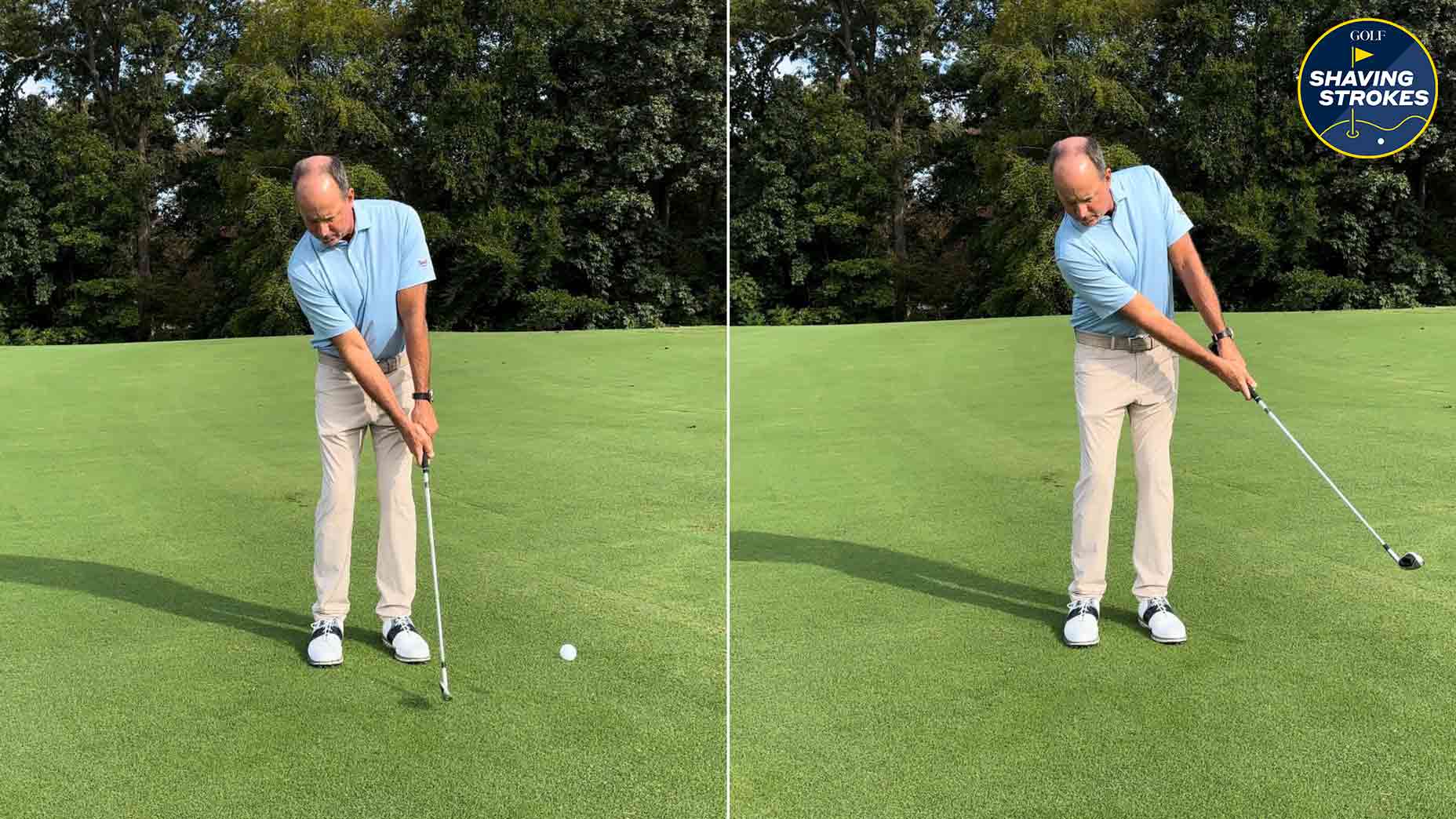 Escape the greenside rough with ease using this technique
Escape the greenside rough with ease using this technique
Follow these 5 foolproof scoring rules to instantly improve your game
I spent the week running around Pinehurst for the GOLF Top 100 Teachers Summit, hearing some of the brightest minds in the industry talk about a variety of fascinating topics. You’ll hear more about all those in the coming days and weeks, but one of my personal favorite takeaways came from Scott Fawcett, the founder of DECADE Golf, a statistical course management approach that uses mathematics and advanced metrics to help golfers lower their scores.
During his presentation, Fawcett shared five rules he credited to Tiger Woods, which double as the backbone of his DECADE system. Follow all five, and lower scores will follow more often.
No matter how many times I’ve seen it, when “The Godfather” is on TV, I watch it and see something new. The same can be said for @scottfawcett . I’ve heard Scott at least 7-8 times now, and I always listen and learn. #top100summit #decadegolf pic.twitter.com/4N9pPzoe4q
— James Hong (@JamesHongGolf) November 12, 2019
Rule #1: No 6s on Par 5s
Par 5s present the biggest scoring opportunities in golf for so many golfers. Being long enough to essentially turn them into long par 4s — and turning a par 72 course into a par 68 — is obviously ideal, but it’s not realistic for everyone. So while birdies are great, pars aren’t going to kill your round. But throw in a bogey or worse on these scoreable holes, and you’re bleeding shots to the rest of the field, and tossing away the biggest opportunities you have.
Rule #2: No Double Bogeys
This is easier said than done for many golfers, of course, but it’s important to remind yourself that bogeys won’t kill your round, but doubles will. And often times, golfers make double by compiling one or more unforced errors. Playing away from pins, taking your medicine, and plotting your way safely around may not be heroic, but you’ll scores will improve because of it.
“One of the single best things amateur golfers can do is chip out every time they hit the ball in the trees and just play for bogey,” Fawcett says.
ADVERTISEMENT
Rule #3: No 3-putts
Three-putting is golf’s ultimate unforced error, and it’s basically impossible to lower your scores if you have a lot of them. Bleeding strokes on the green is a sure-fire way of your progress stagnating, so make avoiding three-putts a high priority (Mark Broadie’s Top 100 Summit presentation can help with that).

Rule #4: No Bogeys With 9-irons
So you’ve hit a good drive, and you’re standing in the middle of the fairway with a 9-iron (or less) in your hands. You may be thinking that this is a good birdie opportunity. You’re not wrong, Fawcett says, but making your birdie shouldn’t be your priority. Instead, think if it as a great opportunity not to make a bogey. Don’t get greedy. Play it safe, take bogey out of play and take your par. You’ll find you make more birdies along the way.
Rule #5: No Blown Easy Saves
You’re going to miss greens. It happens. And when you do, it’s unrealistic to think you’ll get up and down every time. But set a goal for yourself not to blow any easy up and down opportunities, Fawcett says. What counts as an “easy” save? Giving yourself lots of green to work with and, ideally, chipping uphill. Leave yourself enough of those and getting up and down will instantly become easier.
ADVERTISEMENT






